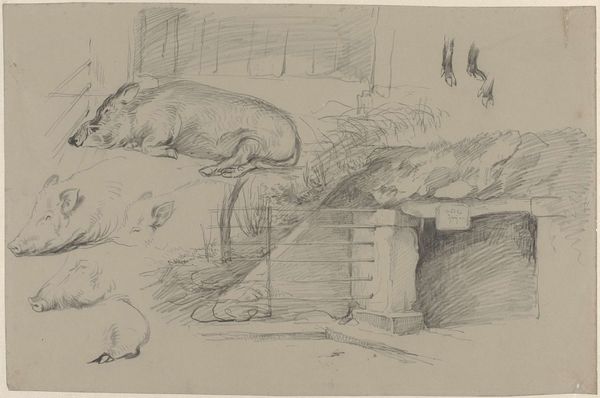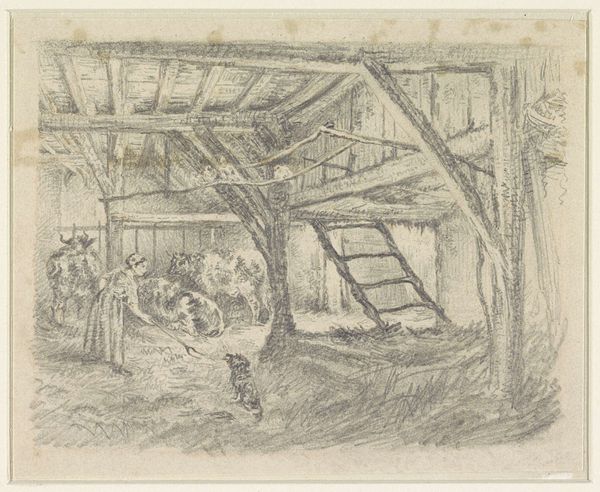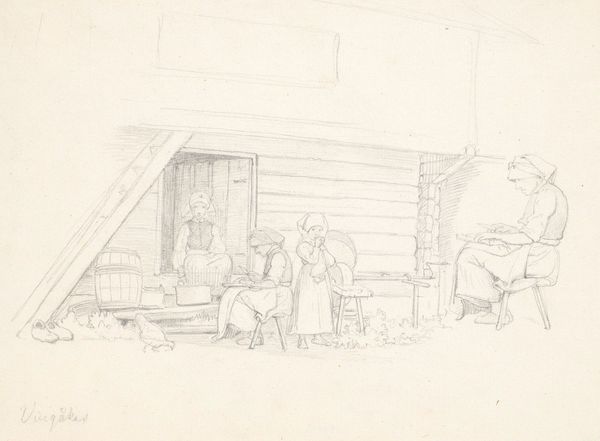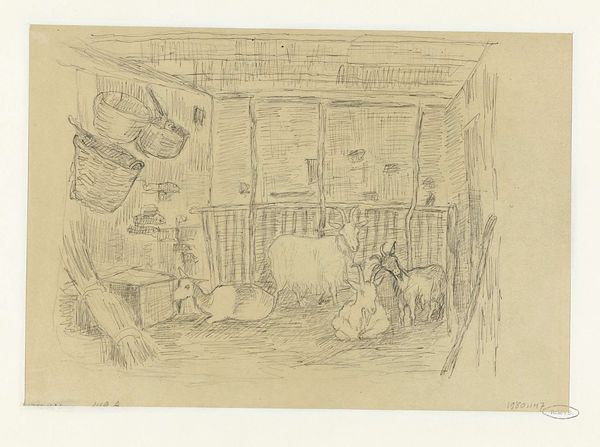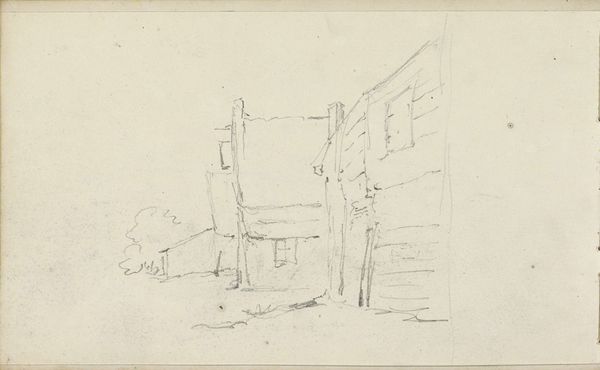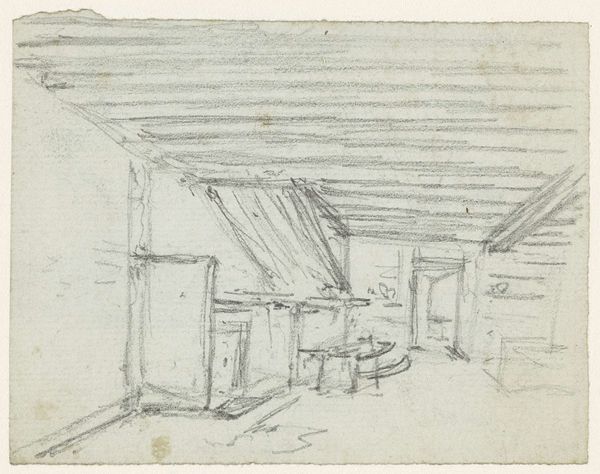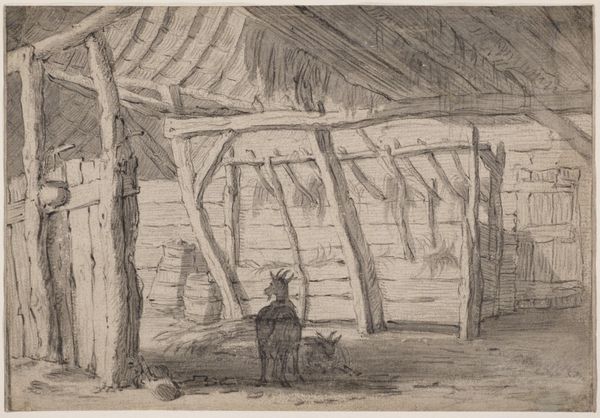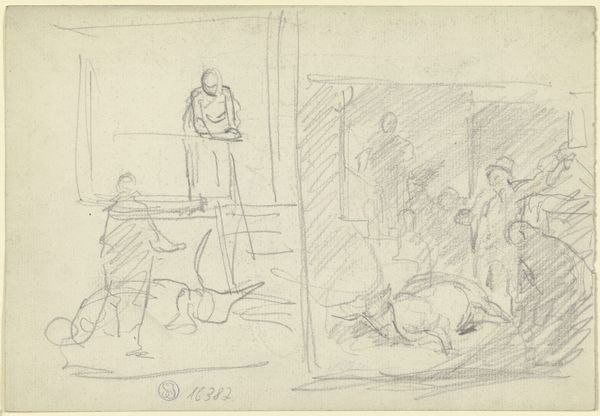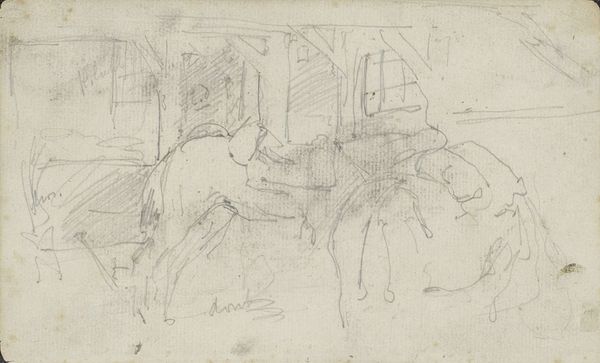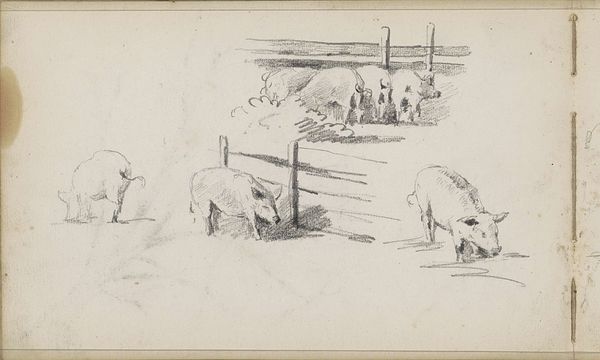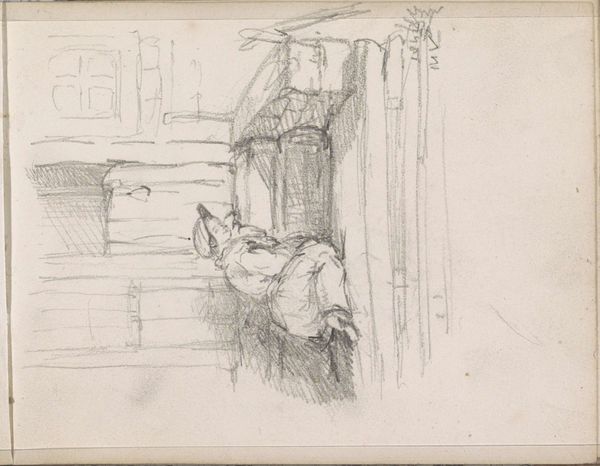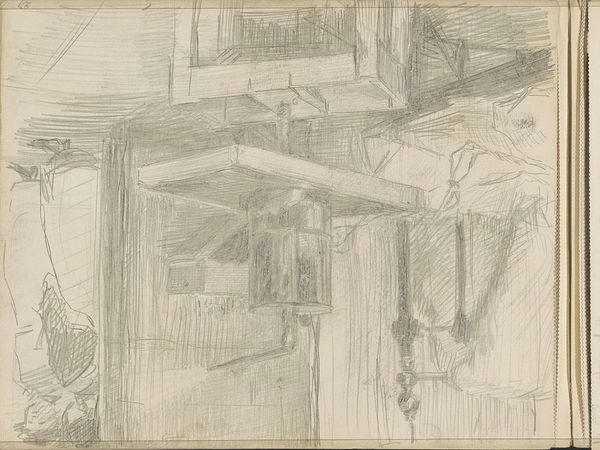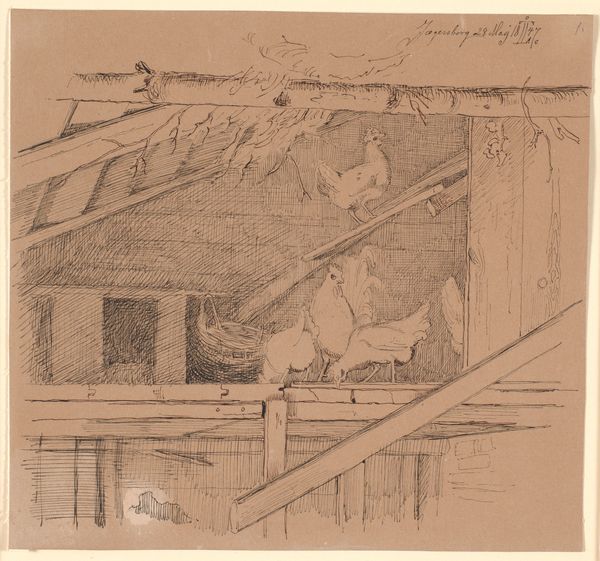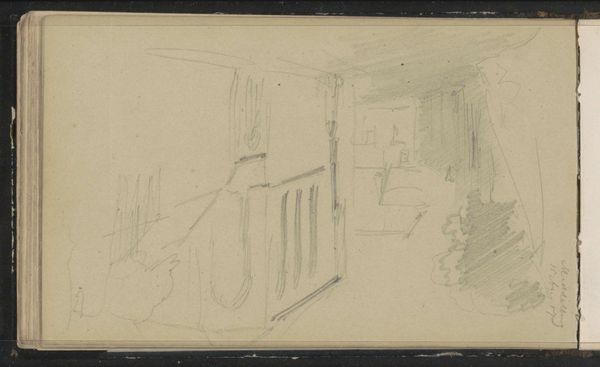
#
light pencil work
#
pen sketch
#
personal sketchbook
#
idea generation sketch
#
sketchwork
#
pen-ink sketch
#
sketchbook drawing
#
storyboard and sketchbook work
#
sketchbook art
#
initial sketch
Copyright: Rijks Museum: Open Domain
Editor: This sketch, titled "Varkens en kippen in en voor een stal," roughly translates to "Pigs and chickens in and in front of a stable," was created by Jozef Israëls sometime between 1834 and 1911. It’s currently held at the Rijksmuseum. It seems to be a pencil drawing, a quick study. I'm struck by the everyday nature of the scene; what can you tell us about it? Curator: The raw materiality here is key. This isn't polished art for consumption, but a glimpse into Israëls' process. Consider the social context: this is likely preparatory work. But what labour is represented, and whose labour is absent? We see the animals, we infer the farmer, but how does Israëls' artistic labour intersect with the realities of rural life? Editor: So, the drawing itself becomes a document of a process, more about the act of observation and recording than about idealizing farm life? Curator: Exactly. Think about the pencil itself: a manufactured object, facilitating Israëls’ translation of lived experience onto paper. It's also worth considering Israëls' relationship to the art market. Was this sketch ever intended for sale, or was it purely for his own exploration? This influences how we read the image itself. What sort of consumer would this have appealed to, or, conversely, challenged? Editor: That makes me rethink my initial assumption of it being simply a preparatory sketch. By looking at the materials and production, we start to understand Israëls' position, both as an artist and a social observer. Curator: Precisely! And hopefully appreciate how a simple drawing contains complex connections to the broader social and economic structures of its time. It blurs the boundary between observation, production and consumption. Editor: It's amazing how focusing on the material process can reveal so much more about the artwork than just its aesthetic value. Thanks!
Comments
No comments
Be the first to comment and join the conversation on the ultimate creative platform.
